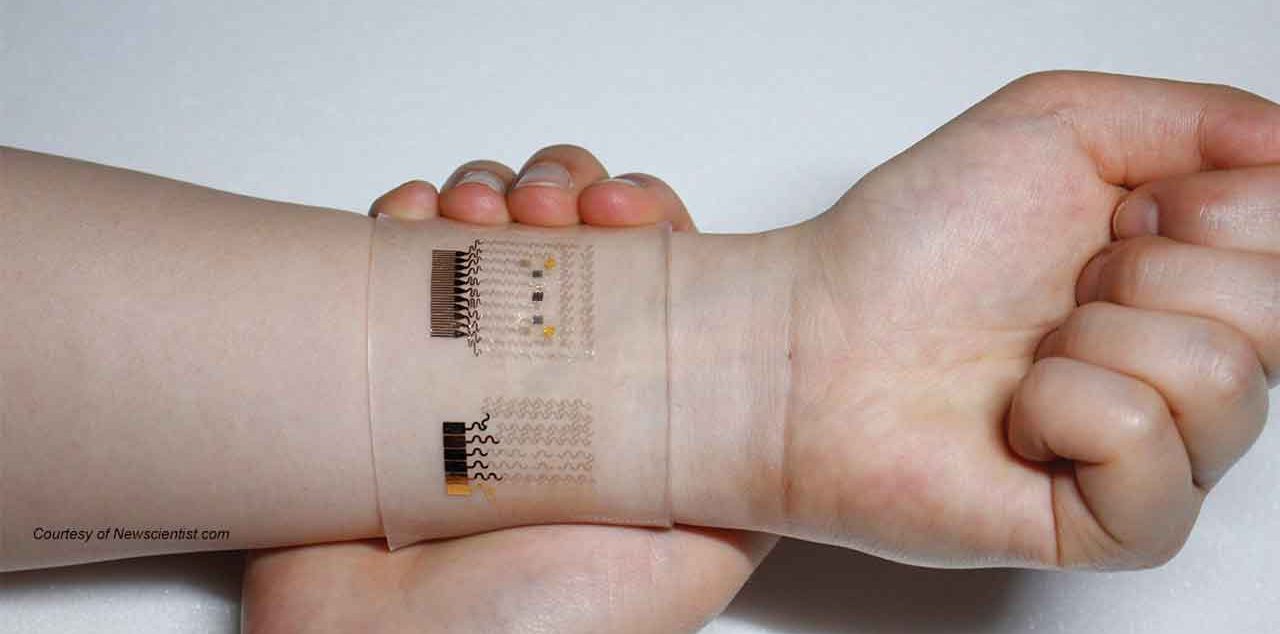Wearable Patch Monitors Blood Sugar

Imagine keeping track of your blood glucose levels without pricking your fingers.
Monica Bailey hates pricking her finger. That’s how most diabetics test their blood glucose levels. She’s waiting impatiently for the wearable patch that uses sweat to monitor blood sugar.
“I’m ready to ditch my blood glucose monitor,” she said. “I prick my finger twice every day to see what level my blood sugars are at.”
Diabetics use blood glucose monitors, which contain a small sharp needle. They prick their finger and put a drop of blood on a test strip, and in just a few seconds know their blood sugar level. Other meters exist where a drop of blood can come from an upper arm, forearm, base of the thumb, or thigh.
“My doctor told me that I could get blood from my arm, but the fingertip is more accurate,” Bailey said. “She also told me about this new tracking device that doesn’t use needles. Unfortunately, it isn’t out yet.”
This new device, a wearable patch that monitors blood glucose levels and delivers medication when needed, is still in the testing stage. Diabetics like Bailey, who hate pricking their fingers to test their blood, are anxiously awaiting this nonintrusive monitor.
The wearable patch was created by a group of international researchers led by Dae-Hyeong Kim from the Institute for Basic Science in Seoul, South Korea. The patch monitors the sweat of the wearer to measure blood glucose and delivers medicationwhen it detects that blood sugar levels are high.
The research is at its infancy stage, and more needs to be done before the product is available for people with diabetes.
The patch was tested on diabetic mice and two adult men with diabetes. Before testing the patch on more people, the scientists will have to work on the drug delivery part of the product. The amount of the drug that the patch will deliver needs to be increased to human-sized doses.
Richard Guy, a professor of pharmaceutical sciences at the University of Bath in the U.K., said the device must be able to stand up to increased sweat induced by brisk exercise, be able to deliver metformin (the leading drug for type 2 diabetes that regulates and reduces high blood sugar levels) without unfeasibly large numbers of microneedles, and that the patch should be smaller and less cumbersome to wear. He also said that the wearable device must be able to do this type of monitoring for a full 24 hours. (Patients who use other devices with microneedles have said that they either don’t feel anything at all or feel a slight tingle.)
The patch uses graphene, an incredibly strong and flexible material made of carbon atoms, which is in other wearable trackers. Some properties in graphene, however, make it hard to detect changes in blood sugar levels. To remedy that, gold particles were added to the device the South Korean researchers tested.
The two men in the study wore the patch, which captured their sweat. The sensors in the patch detected the sweat’s pH and temperature changes, which meant their blood glucose levels rose. As soon as the monitor detects the change, heaters in the patch dissolve a layer of coating, which exposes the microneedles that release metformin.
The patches work in conjunction with mobile devices. The readings from the patches can be transmitted to smartphones so diabetics using the patch can read and monitor their glucose levels.
The scientists expect to test the device on more diabetes patients. Bailey said she’d be happy to be a guinea pig.
Updated:
February 28, 2020
Reviewed By:
Janet O’Dell, RN